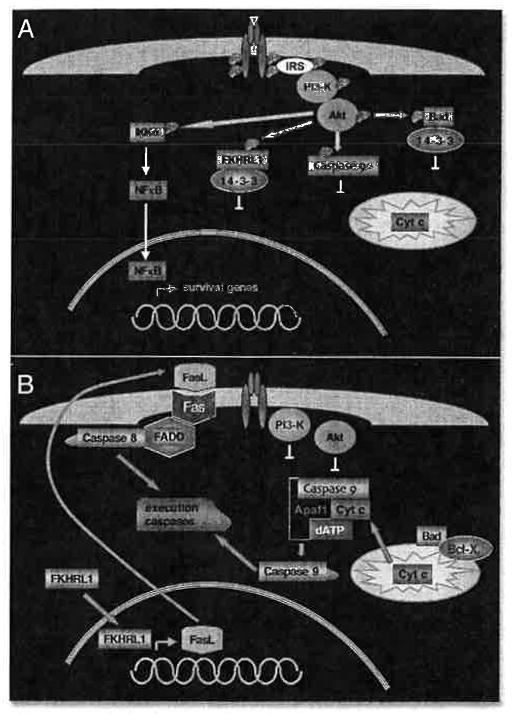Figure 2.
Example of how IGF-1R signaling can lead to cellular survival and at the same time, avoidance of apoptosis. (A) Akt activation by IGF-1R signaling. Activated Akt phosphorylates a number of different substrates. Phosphorylation of IKKa leads to transcription of survival genes through NFkB activation. Phosphorylation of FKHRL1, caspase 9 and Bad inhibits their respective functions. (B) When IGF-I is absent and Akt is inactive. Transcription switches from NFkB to FKHRL1 target genes. These include FasL, which can activate the cytoplasmic caspase cascade. Meanwhile, the mitochondrial caspase cascade can also be activated, through Bad-mediated cytochrome c release. Both cascades converge on activating the execution caspases, which complete apoptosis.

